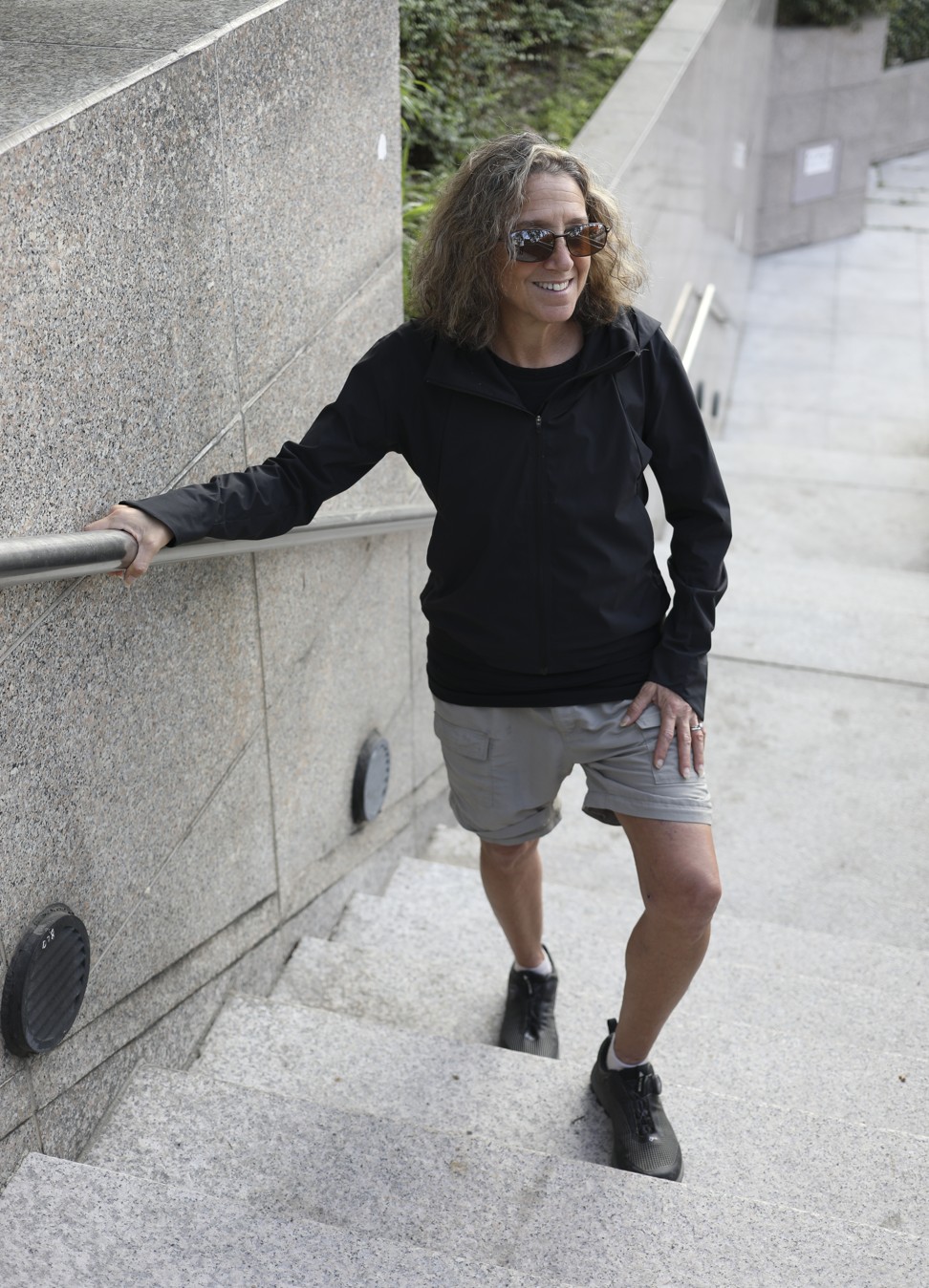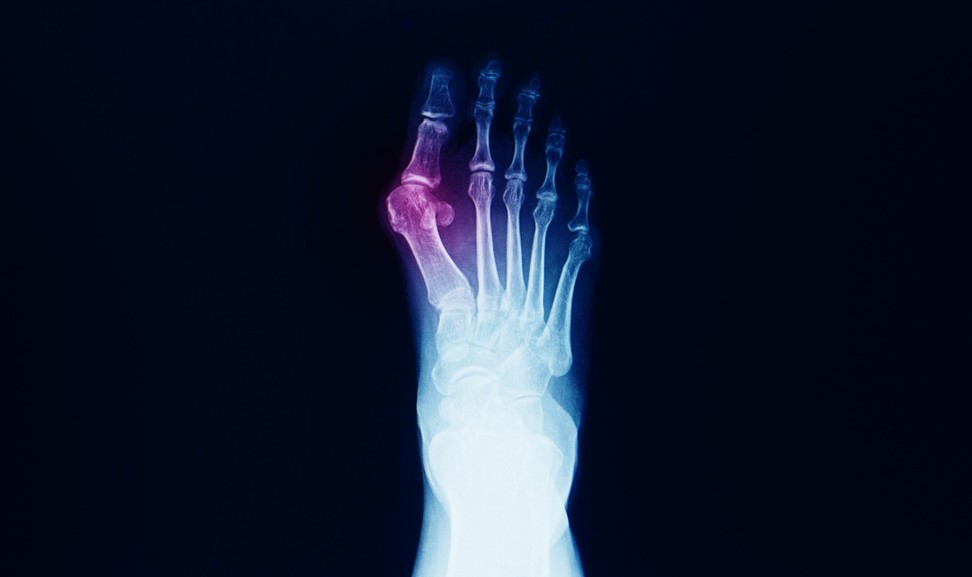
Why do your toes hurt? The causes of bunions and what can be done to treat your feet
- Hallux vagus, or bunions, are a foot condition characterised by bony bumps that form at the base of the big toe and are permanent until surgically removed
- There are more than 130 different types of surgery available to treat bunions and, treated early, some can be removed using minimally invasive surgery
Oprah Winfrey, Victoria Beckham and Amal Clooney share more in common than just their celebrity status. They all suffer from hallux vagus – more commonly known as bunions – a foot condition characterised by bony bumps that form on the joint at the base of the big toe.
Despite the pain, pressure and associated health risks, these superstars have opted not to have surgery on their bunions.
Hong Kong-based Fran Lebowitz is in no rush to go under the knife, either. Genetically predisposed to bunions, which affect around a third of adults worldwide, the 56-year-old literary agent and fiction editor says her feet began to profoundly hurt in her early 20s.
“I always had hammer toes; I think my bunions were forming when I was around 22. I walked in high heels all day, up and down Manhattan and went out dancing at the discos. When I took my heels off for bed, there was a transition period that had me shutting my eyes against the pain.”

While a bunion is permanent until surgically removed, shoes with a wider toe box – the section of the shoe that surrounds the toes – can slow the progression and offer respite from the pain. Other measures include resting the feet, anti-inflammatory medication, a hallux vagus splint, and intrinsic muscle training, advises Dr Kong Siu-wah, a specialist in orthopaedics and traumatology at Asia Medical Specialists, a clinic in Hong Kong with branches in Central and Tsim Sha Tsui.
Without appropriate intervention, bunions can lead to a range of crippling issues, Wong says.
“There can be pain, persistent swelling, redness, repeated ulcers and inflammation as the nerve becomes irritated. When the bunion becomes severe, the big toe may move against the second toe and cause a deformity.
“ The second toe may become dislocated, permanently curling up or permanently curling down. Pain can transfer to the second, third and fourth toe [transfer metatarsalgia] which could then impact the patient’s walking gait and, in turn, affect their knee and spine,” he warns.

She is determined to avoid surgery until she has no other alternative.
“My mother, brother and sister all had surgery, and I think both my mother’s and sister’s didn’t work on at least one foot. The pain they described and the recovery time are enough to keep me complaining instead of going in. I guess I’d rather keep compensating until there is no other choice than to have six months off my activities,” she explains.
According to Kong, there are more than 130 different types of surgery available to treat bunions, depending on their severity and impact on daily life. Treated early, mild and moderate bunions can be removed using minimally invasive surgery.
“For mild and moderate bunions, it is possible to realign the big toe using a minimally invasive surgical approach. The advantages include a smaller wound, lowered risk of complications, and faster recovery time,” says Kong.
With this procedure, patients are allowed to walk using a special shoe known as a Darco boot after 24 hours. Six weeks later, if the bone is healing well, the patient can switch to sports shoes. Around three months later, if the bone has completely healed, the patient can wear regular shoes, even high heels on occasion.

Severe bunions typically call for open surgery. “To correct the malalignment, the degree of bone cutting is bigger, the wound is bigger, and the recovery time is longer,” says Kong. Depending on the type of surgery, it can take from six to 12 months for the bone to fully heal. “This can put people off,” he says.
Allison Ho, who works as a brand strategist and has bunions, says she has not had surgery to date because she was concerned about a painful recovery process.
“Seven years ago, I looked into bunion surgery and decided against it. The idea of having my bones cut made me cringe. I work from home three times a week, so I’m either barefoot or in open shoes, and I wear wide-boxed shoes on the days that I’m out. I have throbbing pain in my feet when I walk around, so I regret not having surgery earlier,” says Ho, now 39.
Most patients have questions about pain during the procedure and in recovery, Yeung says. “It’s a misperception that the procedure will be painful. Most of the time, if the correction has been properly stabilised after the procedure – no matter if it’s internal screw fixation or external cast protection – the patient’s pain can be reasonably well controlled,” she observes.

Like Lebowitz, some bunion sufferers avoid surgery because of the risk of an unsatisfactory procedure or of recurrence.
“Many years ago, some people who had a bunionectomy, or soft-tissue correction, did not have proper bone correction,” says Yeung. “Even today, surgical planning is not always adequate and instead of correcting the bone in a more aggressive way, some surgeons do it very gently. Or they only address the big toe problem and do nothing about the second or third toe problem, which means the patient is still balancing wrong.
“To complete a successful surgery, proper assessment with proper-pre-operative planning is essential. Bone correction and soft-tissue balancing – these to me have to come side by side.”

To reduce any risk of recurrence, Yeung recommends patients wear proper insoles, especially if the underlying cause is flat foot – a condition in which the leg muscles and tendons that attach along the foot’s inner side work overtime to support the flat arch.
“It’s also important to follow the post-operation instructions properly: weight-bearing walking, a physiotherapy rehabilitation program, and proper radiological and clinical follow-up for bone and soft tissue healing. With proper preoperative and operative planning, and an uneventful recovery according to the follow-up schedule and rehabilitation, most patients will return to normal and have an improved quality of life.”
